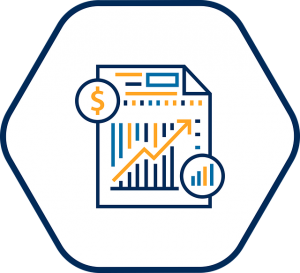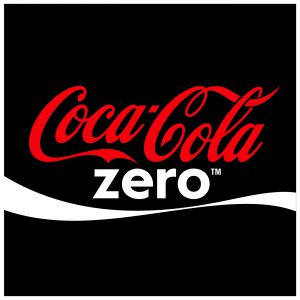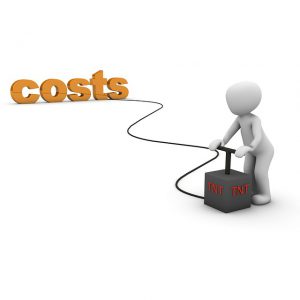Accounting is often defined as the backbone of any corporation or business. Without the numbers explaining the day-to-day operation, it’s tough to tell how well or how poorly said company is doing. In order to simplify accounting as a whole, it is easiest to split it into two separate definitions. On one side, there is financial accounting, which focuses heavily on the numbers and creating balance sheets in order to keep track of the company’s finances. On the other side, there is managerial accounting, which focuses heavily on the management decisions that are made in regards to the companies financial decisions.
Managerial Accounting vs. Financial Accounting
 The main difference between managerial accounting and financial accounting is not that financial only focus on financials and numbers. Both of these rely heavily on numbers and interpreting them. The biggest difference is drawn from managerial accounting focusing also on operational reports throughout the company, and also not being held to certain compliance laws that financial accountants must obey. To be able to understand the more specific differences, we should start with a definition of both.
The main difference between managerial accounting and financial accounting is not that financial only focus on financials and numbers. Both of these rely heavily on numbers and interpreting them. The biggest difference is drawn from managerial accounting focusing also on operational reports throughout the company, and also not being held to certain compliance laws that financial accountants must obey. To be able to understand the more specific differences, we should start with a definition of both.
Financial accounting itself is focused on the financial statements of a company. These could be anything from income statements, balance sheets, statement of cash flows, statements of stockholders equity etc. They specifically put these together based on the companies previous quarter. A great way to get a feel for these financial statements specifically would be to search your favorite stock (such as Nordstrom (JWN) previous 10-k and go over the companies balance sheet, income statements, etc. and review how they look and are put together. This would give you a good feel for where the financial accountants come from and how they look at a company.
Managerial accounting focuses on costs and manufacturing processes in order to streamline efficiency for the company. A good example of this is the “make or buy” decision that a company faces. From a managerial accounting perspective, the numbers they produced are taken from them and reproduced on the financial statements that the financial accountings put together. So, they work together, but both have different roles in the company.
Who uses it?
The easy answer to this question is managers of divisions of corporations. This is absolutely true, but it is important to highlight how certain industries use it for their management decisions. Some titles of these managers include financial controller, managing director, and accounts director. Every company has some aspect of managerial accounting that goes into everyday decisions, but a few great examples include hotel and manufacturing companies (such as Procter and Gamble PG). A hotel works in such a way that they keep a certain amount of rooms open for walk-ins so that they can charge more for a night. A form of managerial accounting helps to forecast the amount and keep the right amount of rooms open so that the hotel is full and revenue is maximized. A manufacturing company would use forecasting as well, but would use it to see if a product has the demand currently and if they should continue to manufacture it or halt production. Coke-Zero just did this – Coke (KO) is currently in the process of rebranding their zero sugar beverages to improve sales. A company such as Coke would also look into the “Make or Buy” question that many manufacturing companies ask themselves.
Make or Buy Decision
Manufacturing companies have a big question to ask themselves when they begin to move a product from the research and development stage to the market. Should they manufacture it in house and have high fixed cost and low variable cost, or should they outsource it to another company and have low fixed cost and high variable cost?
Costs
 A fixed cost is an initial cost taken on by the company. It is a one time charge that is not contingent on the amount of something manufactured. On the other hand, a variable cost is something that is charged per unit manufactured. This process is important in this situation, because if a company can forecast how much they will need something, then they can choose one or the other. If the amount that they are outsourcing is lower when the calculation is completed than the initial fixed cost of setting up the facilities, then it would be better to outsource. However, should they be better off to produce in house should they be making a larger amount of products. This will make much more sense once the numbers are introduced.
A fixed cost is an initial cost taken on by the company. It is a one time charge that is not contingent on the amount of something manufactured. On the other hand, a variable cost is something that is charged per unit manufactured. This process is important in this situation, because if a company can forecast how much they will need something, then they can choose one or the other. If the amount that they are outsourcing is lower when the calculation is completed than the initial fixed cost of setting up the facilities, then it would be better to outsource. However, should they be better off to produce in house should they be making a larger amount of products. This will make much more sense once the numbers are introduced.
So now that this is clearly an example of this could possibly be the new form of Coke that is to be put into the market after Coke Zero. For this example, we will assume Coke isn’t the large company they are and that they don’t have facilities to produce Coke Zero Sugar. The math would look something similar to this:
Make:
100,000,000 Bottles of Coke Zero Sugar
Initial Fixed Cost of setting up the facilities: $100,000,000
Variable Cost per bottle produced: $.10
X = $10,000,000 + 100,000*.10
X = $100,000,000 + $10,000,000
X = $110,000,000
Buy:
100,000 Bottles of Coke Zero Sugar
Initial Fixed Cost of setting up the facilities: $0
Variable Cost per bottle produced: $1.15
X = $0 + 100,000,000*$1.15
X = $115,000,000
The managerial accounting looking at this above would immediately recommend to the CFO that they Make the Coke Zero Sugar rather than buying them. Due to the fact that outsourcing the product costs a whole lot more in the variable cost category, the cost per unit skyrockets making it much more expensive. In reality, Coca-Cola does not bottle its own drink – it contracts out bottling companies, and have since they first opened. They just produce the syrup!
Contribution Margins
Contribution margins are the price charged for the product less the variable costs associated with manufacturing it. The sum of this is the profit earned for the associated product. This number is combined with other contribution margins to come to the company’s profit. The big takeaway from this is that the more that a managerial accountant can get the variable costs down, the more profitable the product can be.
Cost Allocations
 Cost allocation is the process of assigning cost to different cost objects. A cost object can be anything from square footage to a headcount in an office. Essentially, you can value something and add your cost to something in order to find a fair way of spreading it out.
Cost allocation is the process of assigning cost to different cost objects. A cost object can be anything from square footage to a headcount in an office. Essentially, you can value something and add your cost to something in order to find a fair way of spreading it out.
The example of headcount can be used in order to assign costs to each individual employee in the office. From there, a managerial accountant could either choose to eliminate jobs, outsource, or possibly merge two positions in order to allocate costs more fairly and save money. For a square footage example, a managerial accountant could base a warehouse size based on the amount of clientele around the area. They would allocate the square footage to the areas where there are more clients and less to those where there are less. Cost allocating is a great way to make your business more lean and efficient through managerial accounting. It is also important to note that some accountants will use higher tax areas to allocate more costs to them in order to report lower taxable income at the end of the year. This allows them to work together with the financial accountants as mentioned earlier to produce a different balance sheet at the end of the year.